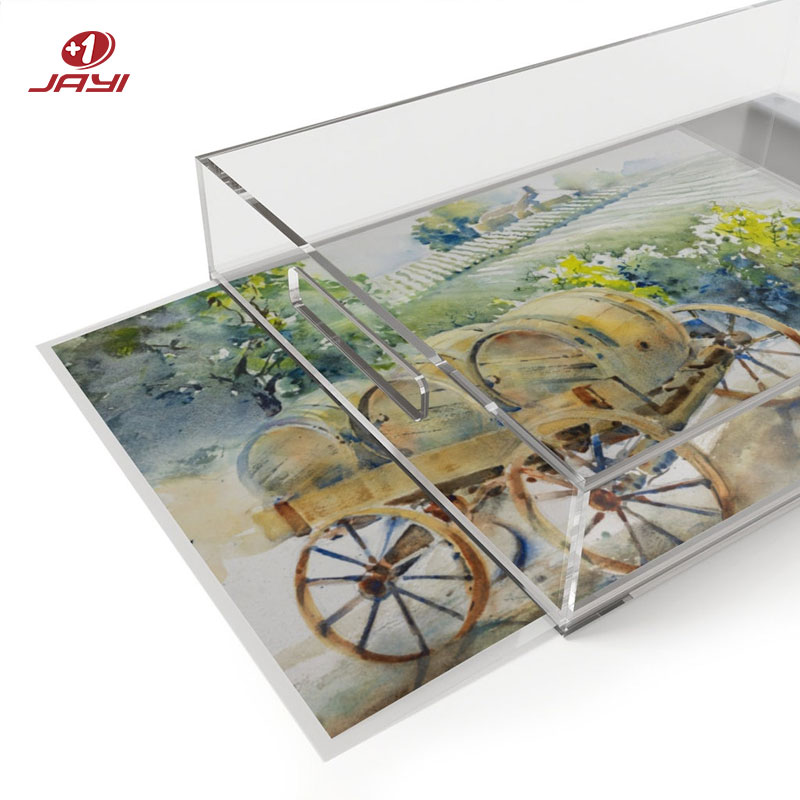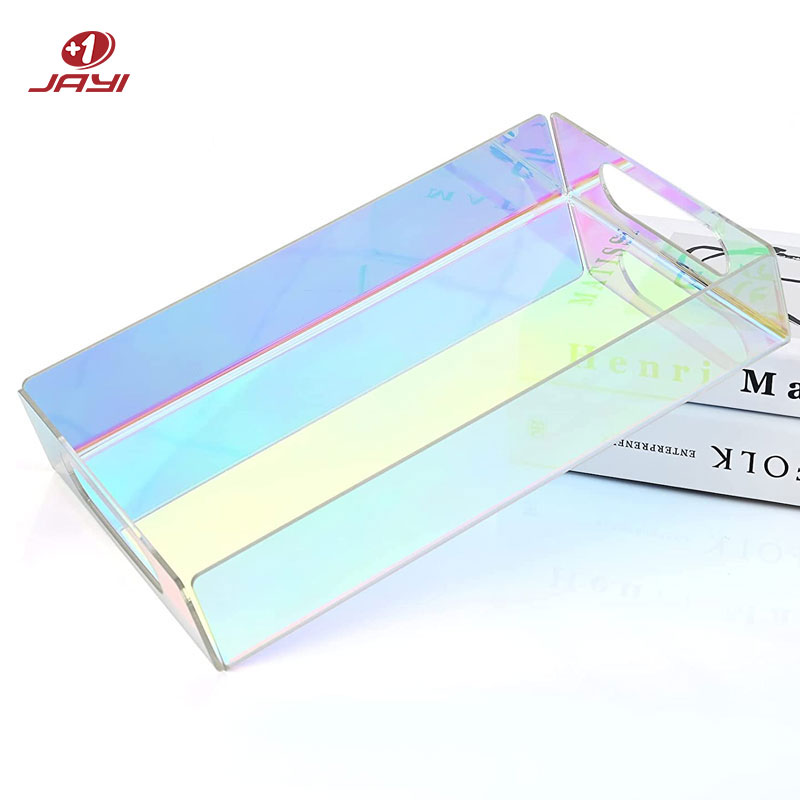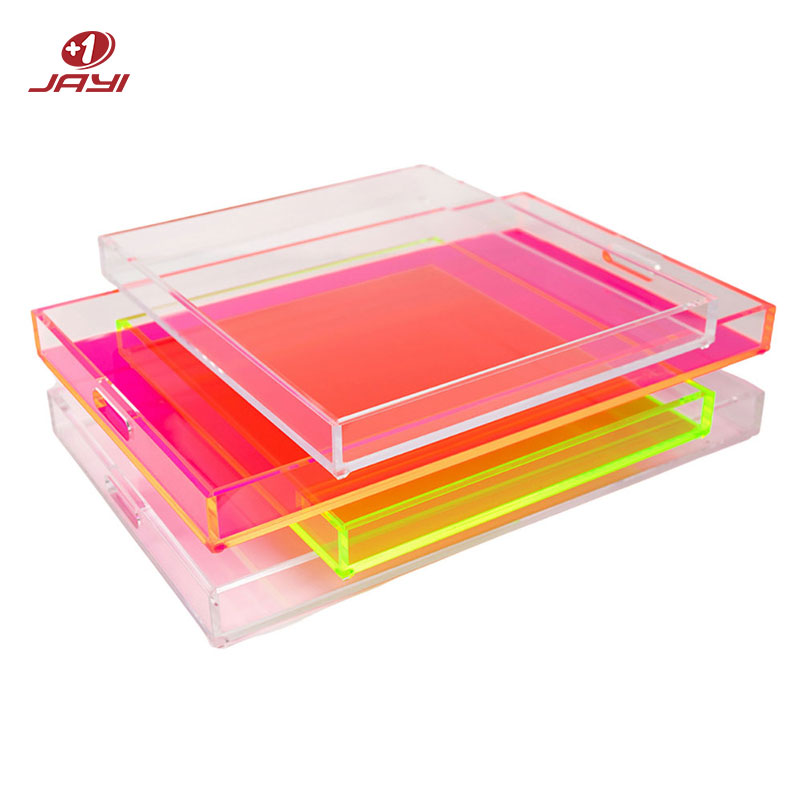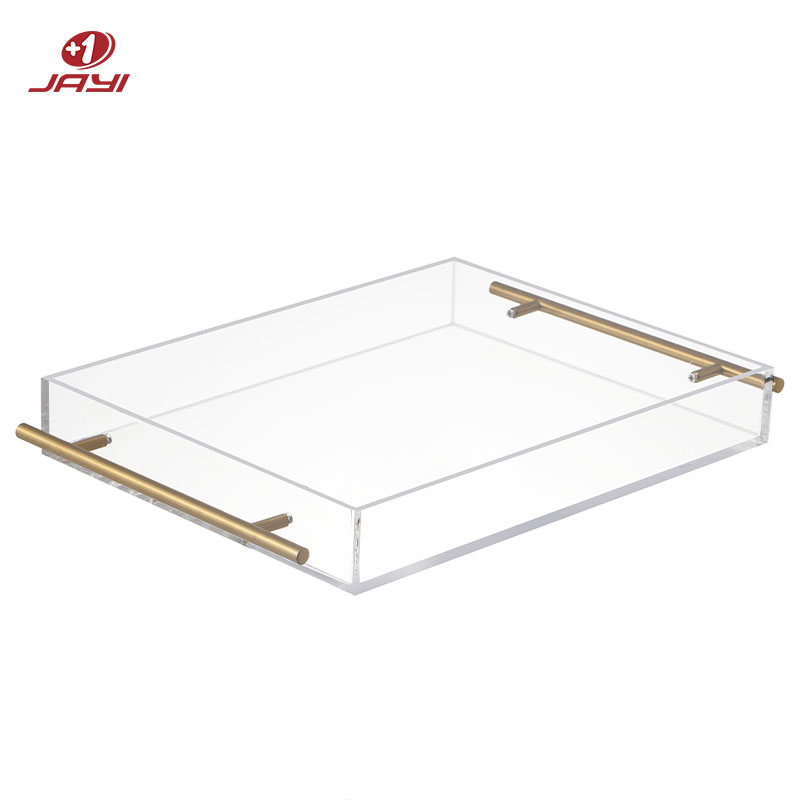As a common type of tray, acrylic tray is widely used in various industries and fields. Its advantages include high transparency, durability, and lightness, making it the preferred choice for many businesses and consumers. Acrylic material has excellent transparency, which can clearly display the items on the tray and improve the display effect and product perception. At the same time, acrylic tray has high durability, can withstand heavy load, not easy to break or deformation, to ensure long service life. In addition, the acrylic tray is relatively light, and easy to handle and store, improving work efficiency.
However, in order to maximize the benefits of acrylic trays and extend their service life, proper maintenance and cleaning are essential. The following will focus on the maintenance and cleaning method of the acrylic tray, to help you correctly maintain and use the tray to ensure its long-term use effect.
Daily Maintenance Precautions
Correct Steps for Cleaning Acrylic Trays
In order to properly clean the acrylic tray and keep it in good condition, here are some detailed cleaning steps:
1. Prepare Cleaning Tools
Choose a mild cleaner, a soft cloth or sponge, and water.
2. Remove Surface Dust
Use a clean soft cloth or sponge to gently wipe the surface of the acrylic tray to remove surface dust and debris.
3. Clean Stains
For mild stains, you can use warm water to gently wipe. For stubborn stains, mix warm water with a small amount of mild detergent and gently wipe with a soft cloth.
4. Rinse and Dry
Rinse the surface of the tray thoroughly with clean water to ensure that no cleaning agent remains. Then, gently dry the tray with a clean soft cloth to avoid water stains.
If you are in business, you may like
Avoid Common Wrong Cleaning Methods
When cleaning acrylic trays, you should avoid the following common wrong cleaning methods:
- Use of alcohol or organic solvents: Alcohol and organic solvents may cause damage to the acrylic material, causing discoloration or deformation. Therefore, avoid using cleaners containing alcohol or organic solvents.
- Use rough materials: Avoid using rough brushes, abrasive pads, or abrasive agents to clean the acrylic tray surface. These materials may scratch or wear the acrylic material, damaging the appearance and texture of the tray.
- Use harsh cleaners: Avoid cleaners with strong acidic or alkaline ingredients, as they may damage the acrylic. Choose a mild detergent and apply it in the correct dilution ratio.
By following the correct cleaning steps and avoiding wrong cleaning methods, acrylic trays can be effectively protected, extending their service life and maintaining their good appearance.
We are a professional manufacturer of acrylic tray, with many years of production experience. Choose our acrylic tray, quality assurance, beautiful and durable. We provide customized services, which can be designed and made according to your size, style, color and other requirements. No matter what shape of tray you need, rounded corners, rectangular or special shape, we can make the style you want.
Maintenance Skills Under Special Circumstances
Method of Removing Scratches and Stains
When the acrylic tray appears scratched or has stubborn stains, some professional skills can be taken to repair and clean it:
- Remove scratches: For minor scratches, use acrylic grinding paste or grinding tool. First, clean the surface of the tray, then use an abrasive paste or grinder to gently wipe the scratches according to the product instructions until the scratches disappear. Care should be taken to apply force evenly so as not to further damage the surface of the tray.
- Remove stubborn stains: For stubborn stains, a special acrylic cleaner can be used. Choose a cleaner suitable for acrylic materials and use it according to the product instructions. Spray some cleaner on a cleaning cloth and gently wipe the stain until it is completely removed. Avoid using rough materials or brushes that will scratch the tray.
Prevent the Acrylic Tray from Fading and Yellowing
In order to prevent the acrylic tray from fading and yellowing, the following maintenance tips can be taken:
- Avoid prolonged exposure to sunlight: Prolonged exposure to sunlight can cause acrylics to fade and turn yellow. Try to place the tray away from light, or use a blackout curtain or shade to reduce direct sunlight.
- Use UV-resistant coatings: Certain UV-resistant coating products can be applied to the surface of the acrylic tray to provide additional protection. These coatings can help reduce the effects of ultraviolet light and delay the onset of fading and yellowing. Select the UV resistant coating that meets the requirements of the product and follow the instructions for construction.
- Regular cleaning and maintenance: Regular cleaning and maintenance, following the correct cleaning steps mentioned earlier, can effectively protect the acrylic tray. Remove dust and stains in time to keep the tray clean and tidy.
By taking appropriate repair skills and maintenance measures, you can help remove scratches and stains, and prevent the fading and yellowing of the acrylic tray, extend its service life and maintain a good appearance.
Other Maintenance Suggestions and Precautions
In addition to the cleaning and repair tips mentioned earlier, here are some other maintenance tips and considerations:
- Regularly check structural integrity: Regularly check the structural integrity of the acrylic tray, including edges, corners and joints for cracks or damage. If any damage is found, the tray should be repaired or replaced in time to avoid further damage or safety issues.
- Avoid stacking heavy objects: Although the acrylic tray has a high strength, it is still recommended to avoid stacking too heavy items or too many items. Heavy items may put pressure on the tray, causing deformation or cracking. Distribute and balance the weight reasonably to ensure that the load of the tray is within a reasonable range.
- Correct storage and handling: When storing and handling acrylic trays, care should be taken to avoid stacking them directly on hard or sharp objects to avoid scratching or damaging the surface of the tray. Use the right tools and proper handling methods to avoid dragging or excessive friction.
- Avoid exposure to chemicals: Acrylic trays may be sensitive to certain chemicals. Avoid contact with acidic, alkaline or corrosive substances to prevent damage or discoloration of the tray surface. Try to avoid contact with chemicals when using or storing.
By following these maintenance recommendations and precautions, you can maximize the life of the acrylic tray and maintain its good appearance and performance. Regular inspection and maintenance of the tray, following proper usage methods, can ensure that it remains safe and reliable in daily use.
Summary
The maintenance and cleaning of acrylic trays is an important step to ensure their beauty and durability. By taking the right maintenance methods, such as regular cleaning, repairing scratches and stains, preventing discoloring and yellows, the service life of acrylic trays can be extended. At the same time, regular inspection of structural integrity, avoidance of heavy objects stacking, and correct storage and handling of trays are also key to ensure the safety and reliability of trays. By following these maintenance and cleaning guidelines, you can ensure that the acrylic tray will maintain good appearance and performance over the long term, providing you with a reliable use experience.
Post time: Oct-09-2023




